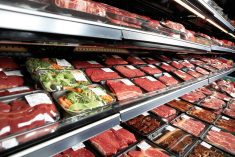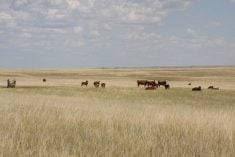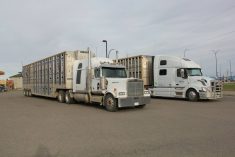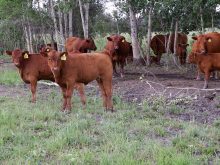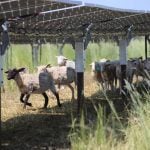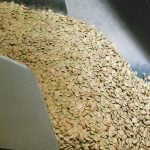RED DEER – A sombre economic message went out to beef producers as market analysts explained the challenge of dealing with record cattle inventories in Canada as international borders stay closed.
Anne Dunford, senior market analyst with Canfax, and Duane Lenz, beef analyst with Cattlefax in the United States, were reluctant to offer forecasts when they spoke to the Alberta beef industry conference Feb. 21 in Red Deer.
Canada’s main problem is a record inventory of 14.7 million cattle. The herd will grow larger with limited cow slaughter and more calves born this spring.
Read Also

August rain welcome, but offered limited relief
Increased precipitation in August aids farmers prior to harvest in southern prairies of Canada.
“How it grows will depend on how many cattle we can move through the slaughter mix,” Dunford said.
Canada produced 2.8 billion pounds of beef in 2003, compared to a record 3.2 billion the year before. This is due to reduced cow kill and lower steer and heifer marketings as producers waited for better market conditions.
Questions remain about how many cattle are being fed at home and what kind of carryover may appear in 2004.
Auction market volumes fell by 30 percent across the country last year. Alberta dropped 40 percent, Saskatchewan fell 11 percent and Manitoba had a slight increase. British Columbia’s volumes were steady.
Only 1.8 million steers were marketed compared to 2.1 million in 2002. Heifer sales were 1.1 million in 2003 and 1.3 million in 2002.
Canadian slaughter capacity isn’t up to handling all the cattle that formerly were exported.
The largest kill last year happened at the end of August when 73,000 head were slaughtered. As more packers come on stream across the country, regular weekly kills should increase.
Canadians bought considerably more beef than average. Actual per capita consumption figures are expected later this spring.
Exports of boxed beef to the U.S. and Mexico have eased the glut somewhat and account for 37 percent of the weekly production. Since mid-October, Mexico has increased its purchases by five percent and that level has escalated since it closed its border to the U.S. following its Dec. 23 BSE case.
Duane Lenz said the U.S. inventory remains flat.
Anticipated expansion lagged due to serious drought in cattle-producing western states. Also, American beef producers are aging and some may decide against expansion despite last year’s good market.
U.S. cow slaughter topped six million and most was motivated by drought. With fewer cows, the U.S. has its smallest calf crop since the 1950s.
Beef demand and retail prices remained strong. To meet the demand, cattle were pulled from feedyards sooner than normal, so carcass weights were under control. This may change as producers have to find a home for the 10 percent of production normally exported.
Without exports, the value of offal products, short plate, skirt meat and ribs will drive down U.S. prices. Tongue, for example, is worth about $10 per pound as an export delicacy, while at home it garners about 22 cents. The U.S. was exporting about 70 percent of its tongues.
There are no indications when borders might reopen, but Lenz anticipates lower prices.




